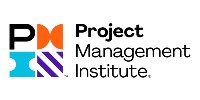Data Analytics and Artificial Intelligence in the Complex Environment of Megaprojects: Implications for Practitioners and Project Organizing Theory
Megaprojects are typically complex, with multiple stakeholders and long timescales, and are vulnerable to uncertainty. The risks of cost overrun, delay, and failure are high. The authors of this article review the ways in which data analytics and artificial intelligence (AI) can engender more stability and efficiency in megaprojects. They evaluate the present and likely future use of digital technology—particularly with regard to construction projects — discuss the likely benefits, and also consider some of the challenges around digitization.

Method Summary
The authors carried out a review of the literature on digitization and data analysis in megaprojects. They conducted keyword searches in scientific publishing databases, including SAGE Journals, Google Scholar, and Compendex Engineering Village. Keywords included: megaprojects, data analytics, digital project delivery, artificial intelligence, automation, and information modelling, among others. They prioritized sources published since 2010.
Key Findings
- Systems are more interconnected and more highly automated than ever before, added to which there is now a rapid growth in machine learning (ML) and AI.
- At the early stages of a megaproject, accurate primary data is critical to planning and decision-making, and this can be provided by data collection and analysis techniques. Data analysis is particularly pertinent to prediction and risk analysis, potentially drawing on data from other similar projects.
- As a megaproject evolves, data monitoring is critical in ensuring it remains on course with regard to costs, scheduling, and use of resources. In construction projects, digital technologies can reduce risk and wastage, improve resource sharing and performance, and coordinate suppliers.
- Digital technologies and monitoring can help provide the sophisticated management practices required to cope with change and complexity, for example, in relation to environmental changes, supply chain variations, logistical challenges, and human resources.
- Digital technologies include:
o Cloud-based computing, which provides secure and unlimited data storage with benefits for data handling generally, and has special significance for sectors such as cybersecurity and big data;
o Information modeling (IM), which enables systems, processes, and environments to be created virtually and monitored to identify inefficiencies and weak points. This has applications in architecture, engineering, facilities management, and energy efficiency, among others;
o Building information modeling (BIM), which provides 3D imagery for planning and development; and
o Robotics, which allows machines to do practical work on-site. - The authors cite 14 specific examples of digital techniques applicable to megaprojects, including genetic algorithms for trial-and-improvement in scheduling, and software for optimizing energy consumption in construction projects.
Practical Implications
- Information digitization provides data in real time that can enable efficient problem-solving.
- Techniques like digital twinning—running a simulated system for comparison with a real one—enable optimization and greater efficiency.
- Automation enables practical work in construction and other sectors to be done efficiently and safely by robots, for example: bricklaying, steel rebar assembly, and strenuous labor in challenging conditions or on difficult terrain.
- Planning, communication, and monitoring can be assisted by robotic aerial systems (for surveillance), or digitized camera equipment (for example, using time-lapse photography, or fitted to cranes to record real-time data).
- Integrated project delivery (IPD) uses digital techniques to improve harmonization among stakeholders, suppliers, systems, and practices to maximize efficiency, eliminate waste, and capitalize on the core competencies of participants. A key feature of this approach is that all stakeholders are involved from the early planning stage.
Overall Takeaway
- Digitization and AI have significant implications for managing megaprojects, including planning and management of time, resources, and risk. In particular:
o Optimized digital models can help to avoid cost and schedule overruns;
o AI can generate efficiencies in planning, liaison, scheduling, and diary management; and
o Integrated project delivery (IPD) strategies and data-driven decision-making improve consistency and reduce reliance on personal judgments. - The use of AI will increasingly lead to megaprojects being modular in structure so information can be garnered from repeating modules, leading to improvements.
- The authors propose that the field of information economics contains useful theory that enables predictions about the future evolution of megaproject management.
- Managers need to be aware of the challenges of digitization, which include skepticism among staff and management, redundancies, the need for staff to be more highly and diversely trained, high investment and implementation costs, lack of industry standards, challenges to organizational structures, and the risk of cybersecurity breaches.
Further Information
For further information on this and similar projects, please contact:
Sachindra Chamode Wijayasekera at scn.wijayasekera@ubc.ca
Syed Asad Hussain at asad.hussein@ubc.ca
Amrit Paudel at amritpaudel403@gmail.com
Bhuwan Paudel at bhuwan.paudel@ubc.ca
John Steen at john.steen@ubc.ca
Rehan Sadiq at rehan.sadiq@ubc.ca
Kasun Hewage at kasun.hewage@ubc.ca
For the full article go to https://doi.org/10.1177/87569728221114002




























































































